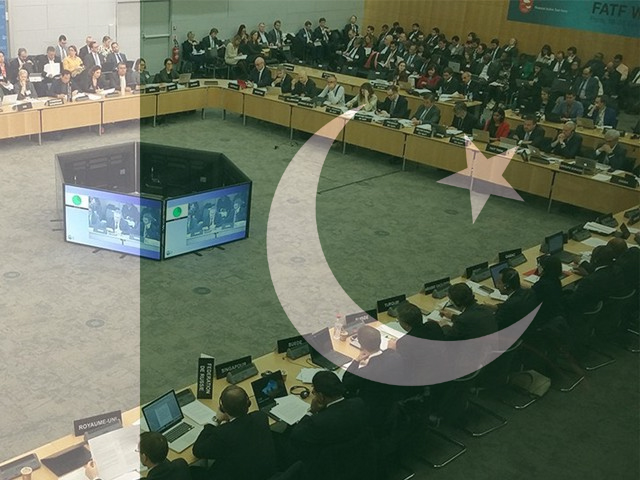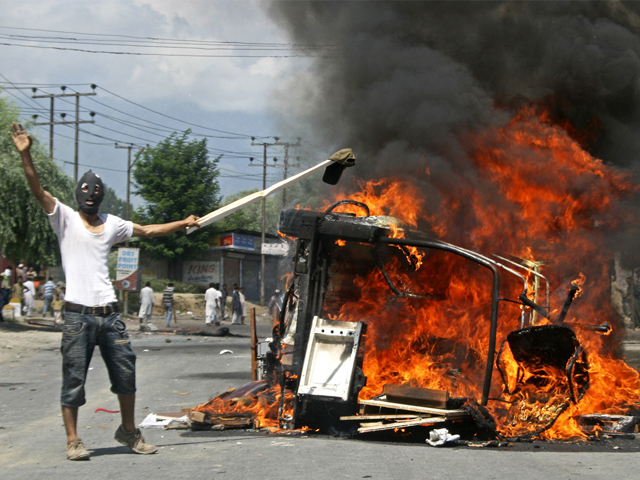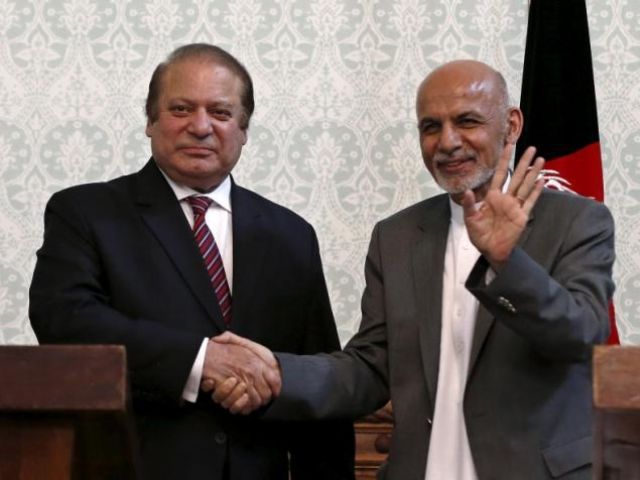
Four Pakistani conspiracy theories that are less fictitious than you'd think
Pakistanis contend that their nation had no terrorism problem until US forces entered Afghanistan in 2001. Nonsense.
Last year, Pakistani journalist Nadeem F Paracha published an article titled Malala: The real story (with evidence) on the website of Pakistan’s Dawn newspaper. The article argued that schoolgirl Malala Yousafzai was shot not by the Pakistani Taliban but by the CIA – and with blanks. The shooting had been completely staged.
The triggerman? Robert De Niro “posing as an Uzbek homeopath”.
Paracha was clearly satirising Pakistani conspiracy theories but some of his countrymen took him quite literally. One obscure newspaper, The Lahore Times, even published an article which was later removed from its website, reporting Paracha’s article as fact. Dawn eventually posted a disclaimer noting that the article was fictitious.
One might wonder how anyone in Pakistan could fall for Paracha’s outrageous story. It also featured an account of Malala bungee-jumping and a photograph of a Pakistani spy in a Spiderman mask. Then again, this is a country where some contend that the Central Intelligence Agency (CIA) – using mysterious weather-manipulating technologies – caused the catastrophic floods that hit Pakistan in 2010, while others insist Osama Bin Laden was Jewish and some suggest the Pakistani Taliban is a CIA asset.
Conspiracy theories have long flourished in Pakistan. One Pakistani newspaper editor quipped that they constitute the country’s only growth industry. It’s easy to understand why: they’re planted in educational curriculums, propagated by a powerful security establishment, promulgated by influential religious leaders and peddled by wildly popular private television channels – all in an environment where facts and transparency are often elusive.
Yet, there’s another reason for the popularity of Pakistani conspiracy theories. Many contain kernels of truth. And unfortunately, these tend to be about the United States. Here are four in particular that aren’t as cockamamie as they may seem.
1. The CIA is everywhere in Pakistan
Many Pakistanis believe the CIA is always hovering, watching and plotting; and that all Americans in the country – investors, diplomats, journalists, development workers (including an NGO worker kidnapped in 2011) – are either spies or connected to them.
This is obviously untrue. Nonetheless, between 2008 and 2011 US intelligence operatives had a sizable on-the-ground presence in Pakistan. Exact figures are hard to obtain, although Anatol Lieven estimated that by 2010, “hundreds of new CIA operatives” had entered Pakistan.
Two major factors account for the CIA’s decision to ramp up its presence. One was the increasing strength of militancy in Pakistan’s tribal areas, which in 2008 prompted Langley to expand a drone war that had begun in 2004.The CIA used the Shamsi airbase, a Pakistani military facility in Balochistan province, to launch drones with the assistance from employees of Xe (formerly Blackwater), who loaded missiles onto them.
In fact, much earlier, after US troops were deployed to Afghanistan in 2001 and until 2011, CIA operatives were stationed at Shamsi and they also had a presence at Shahbaz airbase in Sindh. According to the International Crisis Group, the CIA used both bases for intelligence gathering.
The 2008 terrorist attacks in Mumbai also drove the CIA to expand its presence in Pakistan. As the New York Times’ Mark Mazzetti wrote in his book The Way of the Knife, that tragedy prompted the CIA to increase its intelligence collection about the group – a decision that pushed American spies out of the Pakistani tribal areas and into major cities. The Pakistani security establishment, it should be noted, accommodated this shift. A 2013 report by the Open Society Justice Initiative reveals that Pakistan’s main intelligence agency, the Inter-Services Intelligence (ISI), permitted the CIA to use its facilities in Karachi for detention and interrogation purposes.
In 2011, two notorious incidents confirmed Pakistani suspicions about what they regarded as CIA nefariousness in their country. In 2011, Raymond Davis – a CIA contractor – holed up in a Lahore safe house, shot dead two Pakistanis in a busy intersection. That same year, the CIA successfully recruited a Pakistani doctor, Shakil Afridi, to launch a fake vaccination drive to help track down Osama Bin Laden.
By late 2011, US-Pakistan relations were in deep crisis and many American spies including those stationed at Shamsi, left the country. Today, the CIA presence is more modest. The number of US Special Forces has also shrunk, if not altogether disappeared. During the 2008-2011 period, in addition to launching the raid on Osama bin Laden’s compound, Special Forces personnel provided training to Pakistani security forces and helped implement development projects. In 2010, three US Special Forces officers were killed while on a training mission in northwest Pakistan as they travelled to a reopening ceremony for a girl’s school reconstructed with US funds.
Still, if financial commitment is any indication, the CIA remains deeply engaged in Pakistan. According to Washington Post journalists who have seen US intelligence agency budget requests, proposals for fiscal year 2013 contain “detailed spreadsheets” with “dozens of line items that correspond to operations in Pakistan”. And the drone war in Pakistan has been described as one of the most expensive “covert action” programs in the world.
True, the number of strikes has diminished annually since 2010 and there hasn’t been a single strike since late December. Nonetheless, US officials have indicated a keen desire to maintain the drone program in Pakistan for a number of years, albeit in reduced form, after the departure of US combat troops from Afghanistan.
2. The United States has destabilised Pakistan
Many Pakistanis contend that their nation was peaceful and had no terrorism problem until US forces entered Afghanistan in 2001.
Nonsense.
Pakistan suffered from terrorism as far back as the 1980s when President Ziaul Haq imposed hardline interpretations of Islam that fuelled sectarian militancy. To be sure, external factors have contributed to Pakistan’s worsening sectarian problem but these relate to Pakistan’s battlefield role in a proxy war between Sunni Saudi Arabia and Shia Iran, and not to anything Washington has done. Overall, Pakistan – with its sponsorship of anti-India, anti-Afghan and sectarian militant groups – is arguably the chief source of its own destabilisation. And if one were to identify a principal external state source, it would have to be Saudi Arabia which is funding the spread of hardline Wahhabi and Deobandi Islam in Pakistan.
Still, since 2001, the year that US troops entered Afghanistan, the number of civilian deaths from broader terrorism in Pakistan has increased nearly every year. By no means does this correlation imply causation. Yet, consider the effect of the US drone war in Pakistan which began in 2004. Though they’ve eliminated high-level Pakistani Taliban and al Qaeda targets (in many cases because Pakistan has been unable or unwilling to go after them itself), drones have also stoked virulent anti-American sentiment (survey data does show, however, that some Pakistanis quietly support them). And while no research has conclusively proven that drones create new terrorists, numerous scholars conclude they help fuel recruitment to extremist causes.
The research of Oxford’s Masooda Bano reveals that drones “build a collective consensus” within local Pakistani communities that the United States is unjust. This in turn strengthens a rallying cry of many militant organisations: US policies towards Muslim countries are unjust. In this way, Bano concludes, drones help increase militant recruitment. Other scholars note how drones strengthen extremists more subtly. Public outrage towards drones, in the words of Pakistani security expert Hassan Abbas,
“Circuitously empowers terrorists. It allows them space to survive, move around and manoeuvre”.
Some Pakistani militant groups, using highly twisted logic, cite drone strikes as justification for their attacks on Pakistani civilians. Last year, the Pakistani Taliban, who have been responsible for much of Pakistan’s terrorist violence in recent years, cited drones as the reason for its massacre of ten foreign mountain climbers and an attack on a Christian church. The Pakistani Taliban incidentally, was originally a loose movement of Pashtun tribes who opposed the US war in Afghanistan. Only in 2007, when these groups formally came together as the Pakistani Taliban, did the organisation officially declare war on the Pakistani state.
That was also the year terrorist violence really took off. According to Pakistani government figures, the number of terrorist incidents between 2007 and 2013 was nearly triple that of the 2001 to 2005 period. This spike can be attributed in part to the Pakistani military’s storming of the Lal Masjid (Red Mosque) that year. The deadly assault, which killed more than 100 people, triggered a wave of retaliatory attacks and militant violence has been particularly bloody ever since. However, what is often forgotten is that the Red Mosque was a hotbed of radicalism whose preachers focused much of their ire on the US military presence in Afghanistan and on the then Pakistani President Pervez Musharraf’s perceived support for it.
In effect, US policies have contributed, albeit indirectly, to Pakistan’s destabilisation.
3. The United States doesn’t value Pakistani lives
Washington is Pakistan’s biggest bilateral donor and Pakistan is one of the top recipients of US financial assistance. The United States provides humanitarian assistance during natural disasters, funds the construction of new hospitals and supports hundreds of thousands of poor farmers. It has cut off security assistance to certain Pakistani military units guilty of human rights violations. It has even – much to the anger of many in Pakistan – hosted gay rights events at the US embassy in Islamabad.
And yet despite all this, it’s hard to dispute what many Pakistanis allege. For the United States, Pakistani lives are relatively cheap. This is because Washington often pursues its ‘national security objectives’ in Pakistan with apparent disregard for their humanitarian costs.
Recall Shakil Afridi, the doctor recruited by the CIA to help locate Bin Laden. Afridi’s fake inoculation scheme has hardened the long-standing suspicions of many Pakistanis about vaccinations, thereby complicating polio eradication efforts in Pakistan – one of the very few countries where the disease remains entrenched. Interaction – an alliance of nearly 200 NGOs – warned in a 2012 letter to CIA director David Petraeus that the incident “casts doubt on the intentions and integrity of all humanitarian actors in Pakistan, thereby undermining the international humanitarian community’s efforts to eradicate polio” – and to provide humanitarian assistance on the whole.
The Afridi affair also shattered the trust that many Pakistani health workers had painstakingly developed with local communities. In the words of two prominent global health experts,
“Intelligence officials imprudently burned bridges that took years for health workers to build.”
And then there are drones.
Some may argue, with justification, that the US decision to deploy drones demonstrates considerable respect for Pakistani lives because they cause far fewer civilian casualties and are less indiscriminate than the scorched-earth tactics often used by the Pakistani military in tribal belt-based counter militancy operations. However, at the same time, Washington rarely shows any concern for civilian casualties. It consistently minimises or shrugs off accusations of such deaths. For a period in 2010 and 2011, the CIA contended there had not been a single civilian casualty – a claim that even drone supporters described as “absurd”; and it is not known to have ever publicly apologised for a single civilian death (although it has done so for drone strikes in Afghanistan).
Finally, US officials have rarely, if ever (at least publicly), acknowledged the damaging psychological effects of drone strikes. Researchers and journalists have documented cases of depression, acute anxiety, sleeplessness and even symptoms related to post-traumatic stress disorder (PTSD) among those who have been affected by drones in Pakistan, including those who have simply heard their characteristic buzzing sound.
At other times, US policies have seemingly exploited the humanitarian needs of Pakistanis. Consider how (according to a 2012 book on US special forces) the CIA “took advantage of the chaos” wrought by an earthquake in Kashmir in 2005 and dispatched dozens of operatives – all posing as aid or construction workers – into the stricken nation. Pakistani military officials have accused the CIA of doing the same thing during the 2010 floods.
4. The United States wants to seize Pakistan’s nuclear weapons
This canard is as dangerous as it is popular. In order to ensure that the United States doesn’t commandeer its nuclear assets, the Pakistani military moves them around frequently including, reportedly, via delivery vans on crowded city streets.
In effect, this conspiracy theory undermines Pakistan’s nuclear security.
There’s no reason to believe the United States has any immediate plans to seize Pakistan’s nukes. However, Washington has apparently reserved the right to do so in the future, should its vital national security interests ever be sufficiently imperilled. After the assassination of Benazir Bhutto in 2007, the Pentagon disclosed a ‘contingency plan’ that would involve US Special Forces, hypothetically in cooperation with Pakistan, “spirit[ing] away” assets at imminent risk.
Then, in 2011, after the Bin Laden raid, reports emerged of the Pentagon preparing for two last-resort scenarios: ‘capturing and disabling’ a few loose nukes and even more dangerous, disabling (or even securing altogether) Pakistan’s entire arsenal in the event of a civil war or fundamentalist coup.
For now, US officials are keeping a close and worried watch on Pakistan’s nukes. Top-secret intelligence documents made available by Edward Snowden last year revealed that budget write-ups divide a section on global illicit weapons containment into two categories – Pakistan and everyone else. Washington has also established a Pakistan Weapons of Mass Destruction (WMD) analysis cell to monitor the movement of nuclear materials.
Ultimately, the point here is not to legitimise Pakistani conspiracy theories. Rather, it is to highlight how US policies in Pakistan often strengthen and validate anti-American narratives that Washington would much prefer to undercut.
This post originally appeared here.




COMMENTS (37)
Comments are moderated and generally will be posted if they are on-topic and not abusive.
For more information, please see our Comments FAQ